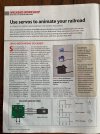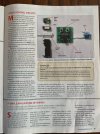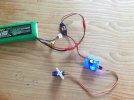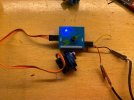Madman
Registered
I've played around with servos in the past. I would like to make more use of them. There is an article in Classic Toy Trains about using servos to animate various things on our layouts.
I don't quite understand how to activate the servo without using R/C. The article talks about a servo driver. but how's the servo driver controlled ?



I don't quite understand how to activate the servo without using R/C. The article talks about a servo driver. but how's the servo driver controlled ?







